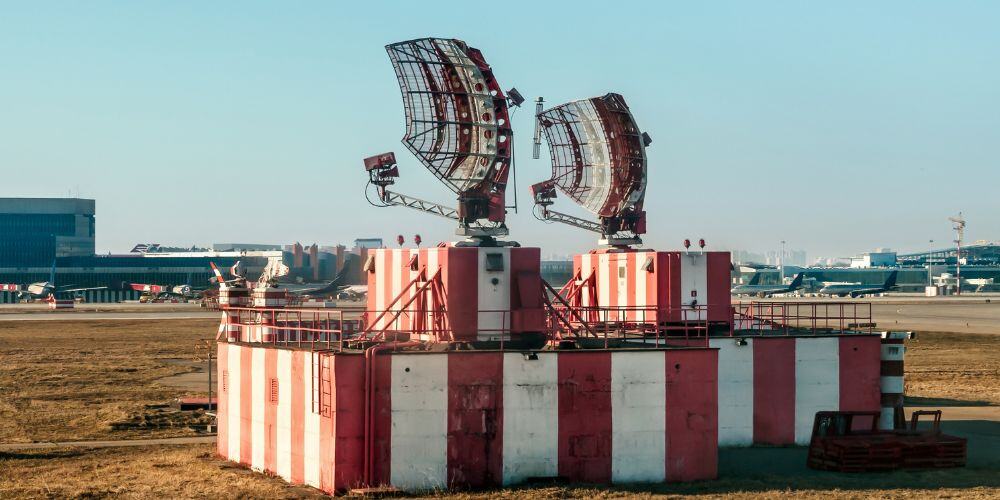RF system performance is mission-critical in military aerospace engineering. From satellite...
Optimizing Performance in RF Systems with High Pass Filter Frequency Response

Introduction
High pass filters (HPFs) play a critical role in RF systems by allowing high-frequency signals to pass while blocking unwanted low-frequency interference. This ensures signal integrity and system stability in applications such as satellite communications, radar, and electronic warfare. Without effective filtering, low-frequency noise from power lines, improper cable shielding, and environmental factors can degrade performance. This interference introduces unwanted distortion, compromising signal quality.
The frequency response of an HPF directly impacts RF system functionality, dictating how effectively it attenuates unwanted signals while preserving desired ones. Key filter parameters such as insertion loss, roll-off characteristics, and return loss determine overall performance. Understanding these factors is essential for engineers designing high-frequency systems. Q Microwave specializes in delivering precision-engineered high pass filters, ensuring optimal performance through advanced design strategies and high-quality manufacturing.
Understanding High Pass Filter Frequency Response
What is Frequency Response in HPFs?
The frequency response of a high-pass filter determines how it affects signals across different frequencies. HPFs allow signals above a specific cutoff frequency (Fc) to pass while attenuating lower frequencies.
Practical Applications
- Satellite Communication: Filters out unwanted low-frequency noise to ensure clear data transmission.
- Radar Systems: Enhances detection accuracy by removing interfering frequencies.
- Electronic Warfare: Prevents low-frequency jamming from disrupting critical signals.
Key Frequency Response Parameters
Cutoff Frequency
The cutoff frequency is the point at which an HPF begins attenuating signals below it. If miscalculated, it can lead to critical signal loss or allow unwanted noise to pass through, affecting performance.
Roll-off Rate (Transition Bandwidth)
The roll-off rate or the transition bandwidth defines how sharply an HPF attenuates frequencies below the cutoff. A steeper roll-off enhances rejection of unwanted signals but increases insertion loss, which can impact overall signal strength. On the other hand, a more gradual roll-off minimizes insertion loss, but may allow some low-frequency leakage, affecting overall filter efficiency.
Insertion Loss
Insertion loss is the reduction in signal strength as it passes through an HPF. It is a crucial factor in high-frequency applications, where even minor losses can significantly affect performance and signal integrity. Higher insertion loss can weaken the desired signal, potentially leading to reduced efficiency in systems such as satellite communications, radar, and electronic warfare. Engineers must carefully balance insertion loss with other filter characteristics, such as roll-off rate and cutoff frequency, to ensure optimal performance.
Return Loss
Return loss measures how well an HPF matches the impedance of a system. A higher return loss indicates better impedance matching, minimizing signal reflections and ensuring efficient power transfer. Poor return loss can lead to increased signal reflections, reducing system efficiency and degrading overall performance. In high-frequency applications, proper impedance matching is crucial for maintaining signal integrity and minimizing transmission losses.
Number of Filter Sections (Order of the Filter)
The number of filter sections, or the order of the HPF, determines its performance characteristics. Higher-order filters provide a steeper roll-off, effectively attenuating unwanted frequencies. However, they also increase insertion loss, which can weaken the desired signal. Engineers must carefully balance these trade-offs based on the specific application, ensuring optimal performance while minimizing signal degradation.
Impact of Frequency Response on RF System Performance
A well designed HPF is not just about blocking unwanted signals, it directly influences signal clarity, efficiency, and compliance with industry standards. Let’s explore how frequency response affects different aspects of RF system performance.
Enhancing Signal Integrity & Clarity
HPFs play a critical role in maintaining signal efficiency and accuracy in RF systems, particularly in defense, aerospace, and communication networks. By eliminating unwanted low-frequency noise, these filters help preserve signal integrity and prevent performance degradation. For example, in radar systems, low-frequency interference can obstruct target detection, making HPFs essential for ensuring precise and reliable operation. Properly designed HPFs contribute to clearer signal transmission, reduced interference, and improved overall system performance.
Electromagnetic Compatibility & Noise Reduction
HPFs play a vital role in ensuring electromagnetic compatibility by preventing electromagnetic interference from external sources such as power lines, wireless signals, and neighboring electronic components. By filtering out unwanted low-frequency noise, HPFs help maintain signal clarity and system reliability.
In military and aerospace applications, compliance with MIL-STD-461 is essential. This standard defines EMC requirements for military electronics, ensuring that systems operate effectively in high-interference environments. Proper use of HPFs helps meet these stringent standards, enhancing the robustness and performance of RF systems.
Performance Considerations in GHz-Range Systems vs. Lower Frequencies
High-frequency (GHz-range) systems present unique challenges compared to lower-frequency applications, requiring precise design considerations to maintain optimal performance.
- Traces and Impedance Matching: In GHz-range systems, PCB traces act as transmission lines rather than simple conductors, so making proper impedance matching is critical to prevent signal reflections and losses.
- Parasitic Effects: Small design variations can introduce unintended inductance and capacitance, significantly impacting performance at high frequencies.
- Temperature Shifts: Frequency stability relies on low-loss, temperature-stable materials to prevent drift and ensure consistent operation.
- Cross-Talk and Shielding: Compact RF environments require effective shielding techniques to minimize frequency leakage and prevent interference between components.
- Connector Selection: Precision connectors designed for high-frequency applications are essential to minimize insertion loss and maintain signal integrity.
Addressing these factors is crucial for achieving reliable and efficient performance in GHz-range RF systems.
Engineering Challenges in High Pass Filter Design
Balancing performance and practical constraints is critical in HPF design. From selecting materials to optimizing frequency response, engineers face several challenges that impact the efficiency of high-frequency systems.
Material Selection & Trade-offs
The choice of materials plays a crucial role in HPF performance, particularly in high-frequency applications. Low-loss materials such as PTFE and ceramic substrates help minimize signal attenuation, ensuring better efficiency. Thermally stable materials prevent frequency drift, making them essential for extreme environments like aerospace and defense applications.
However, material selection involves trade-offs:
- Better stability often comes at a higher cost, making budget considerations a key factor.
- More compact designs may lead to increased insertion loss, requiring careful engineering to balance size, performance, and efficiency.
Optimizing material selection is essential for achieving the desired performance while maintaining cost-effectiveness and system reliability.
Designing for High-Frequency Performance
At GHz frequencies, transmission line effects are critical in HPF design. PCB traces act as part of the filter circuit, and mismanagement can cause impedance mismatches and signal degradation. Proper layout and controlled impedance routing help maintain performance.
Simulation tools like Ansys HFSS predict filter behavior using mathematical models and transfer functions, allowing engineers to optimize design parameters before fabrication. This ensures the HPF meets frequency response requirements with minimal loss.
Shielding and EMI suppression prevent frequency leakage and cross-talk in dense RF environments. Military and aerospace applications demand stringent shielding to ensure system reliability in high-interference conditions.
Connector Selection at High Frequencies
High-frequency systems require precision-engineered RF connectors to ensure minimal signal loss and stable performance. Many connectors designed for lower frequencies cannot effectively handle GHz-range signals, leading to degradation.
A common mistake in connector selection is using suboptimal connectors with poor impedance matching, excessive insertion loss, or inadequate shielding, which can introduce unwanted signal reflections and reduce efficiency. Additionally, improper mounting and impedance matching can further impact performance, making careful selection and installation essential for high-frequency applications.
Q Microwave’s Expertise in High-Performance HPFs
Customized Filter Design for RF Applications
Custom HPF designs must balance key trade-offs to meet specific customer requirements. Engineers optimize filters by considering roll-off vs. insertion loss, size vs. performance, and material stability vs. cost. Achieving the right balance ensures optimal performance while addressing application constraints, whether for high-frequency communications, aerospace, or military systems.
Solutions for Military & Aerospace Applications
QMicrowave’s high-reliability HPFs for military and aerospace applications are engineered to withstand extreme temperatures, high vibration environments, and electromagnetic interference. These filters ensure stable performance in harsh conditions while meeting strict industry standards like MIL-STD-202 for environmental testing and MIL-STD-883 for microelectronics screening. Compliance with these standards guarantees durability and reliability in mission-critical systems.
Maximizing RF System Performance with the Right High Pass Filter
The frequency response of an HPF plays a crucial role in RF system performance. Whether for military, aerospace, or commercial applications, selecting the right HPF ensures clear signal transmission, reduced interference, and optimized efficiency for high-frequency applications.
Looking for a high-performance HPF for your RF system? Q Microwave specializes in precision-engineered filters for military, aerospace, and commercial applications. Partner with us today to discuss your custom filter needs!



